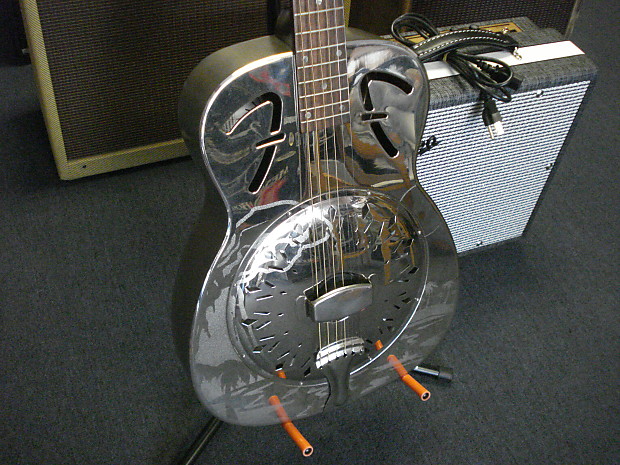The Dobro, a resonator guitar renowned for its unique sound and style, offers a rich palette of tones and textures for musicians. Whether you are a beginner or seasoned player, unlocking the secrets of the Dobro can be a journey. Here are some essential techniques to help novice players navigate the intricacies of instrument. The Dobro features a resonator cone instead of a traditional wooden soundboard. Understanding its construction and how it affects tone production is crucial. The resonator cone acts as a speaker, amplifying the vibrations of the strings, resulting in the distinctive Dobro sound.
Right Hand Technique – Mastery of right-hand technique is fundamental for Dobro players. Utilizing fingerpicks or a metal slide, experiment with different picking patterns and attack angles to achieve varying tones and dynamics. Practice precision and control to articulate each note clearly and expressively.
Slide Technique – Slide playing is central to the beginner dobro signature sound. Place the slide over the strings, lightly resting on the fretboard, and glide smoothly between notes. Experiment with different slide materials and lengths to find your preferred tone and feel. Develop muscle memory and intonation accuracy through diligent practice.
Open Tunings – Open tunings unlock the Dobro’s harmonic potential and facilitate slide playing. Common tunings like Open G GBDGBD and Open D DADF#AD offer rich resonance and ease of fretting. Explore alternate tunings to expand your sonic palette and inspire creative exploration.
Damping and Sustain Control – Mastering damping techniques is essential for controlling sustains and preventing unwanted string noise. Use the palm of your picking hand to mute strings selectively, achieving clean and articulate phrasing. Experiment with varying degrees of damping to tailor your sound to different musical contexts.

Dynamic Expression – Explore the full range of dynamics to imbue your playing with emotion and nuance. Experiment with volume swells, accentuation, and rhythmic variations to create dynamic contrasts and musical tension. Practice playing softly and loudly, exploring the instrument’s expressive capabilities.
Melodic and Harmonic Techniques – Beyond traditional slide playing, explore melodic and harmonic techniques to broaden your musical vocabulary. Experiment with double stops, harmonics, and chord inversions to add depth and complexity to your playing. Embrace versatility and adaptability to navigate diverse musical genres and styles.
Listening and Learning – Immersing yourself in Dobro music is vital for honing your craft and expanding your musical horizons. Study recordings of master Dobro players across various genres, analyzing their techniques and interpretations. Transcribe solos and melodies to internalize phrasing and develop a deeper understanding of musical language.
Patience and Persistence – Mastery of the Dobro is a journey that requires dedication and perseverance. Be patient with yourself and embrace the learning process, celebrating incremental progress along the way. Set realistic goals and practice consistently to cultivate your skills and musical identity.
Seeking Guidance – Do not hesitate to seek guidance from experienced Dobro players and instructors. Take advantage of workshops, online tutorials, and instructional resources to deepen your understanding and refine your technique. Embrace mentorship and community, fostering connections with fellow musicians and enthusiasts.